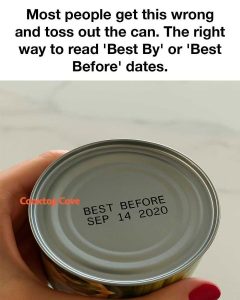
“Best By” and “Best Before” dates are everywhere on packaged foods, yet many people misunderstand what they actually mean. These labels don’t indicate when food becomes unsafe to eat. Instead, they show when the product is expected to be at its peak quality in terms of flavor, texture, and appearance.
Because of this confusion, a lot of perfectly edible food is discarded prematurely, contributing significantly to food waste. Learning how to read and interpret these dates—especially on canned goods—can help you save money, reduce waste, and make smarter food choices.
What Does ‘Best By’ Really Mean?
Manufacturers set ‘Best By’ dates to mark the time frame when a product is likely to offer its best taste, color, and nutritional value. These dates take into account the type of food, packaging methods, and ideal storage conditions. However, except for products like infant formula, these dates are generally not regulated by law. They serve as quality guidelines, not expiration deadlines.
Common Misunderstandings About Expiration Dates
A common mistake is to treat ‘Best By’ dates as strict expiration dates. While food may lose some freshness or texture after the date, it is often still safe to eat as long as there are no signs of spoilage. This is especially true for shelf-stable products like canned foods, which can remain good for years past their ‘Best By’ date if stored properly.
